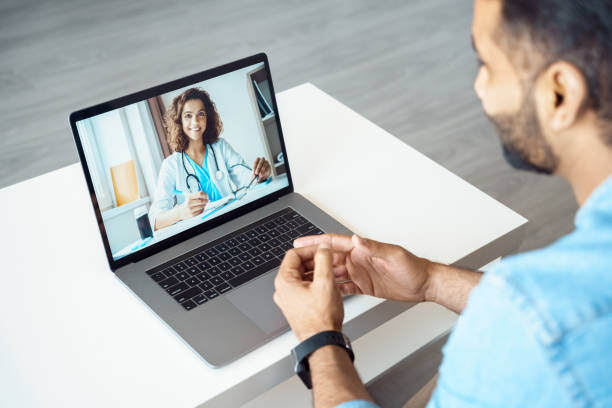
Data analytics in health care is studying data-derived insights to optimize a health care center's services and improve patient care. Health care facilities can use remote patient monitoring (RPM) devices to collect data that helps them improve a patient's long-term health outcomes. For example, physicians can analyze patient-derived data to identify trends that cause hospital readmissions for patients with particular medical conditions.
Other benefits of leveraging patient-derived data include identifying an individual's most effective treatment courses for an individual, predicting a patient's vulnerability to specific medical conditions and providing actionable insights that improve shared decision-making between patients and providers. Ultimately, health care providers can leverage data analytics to improve the quality of care they provide.
The Role of Data Analytics in Remote Patient Monitoring
Remote patient monitoring leverages technology to provide patient care in addition to what’s provided in a traditional clinical setting. This can be either during their stay in a care facility or at home once discharged. RPM is especially beneficial for patients with multiple comorbidities or who live in rural areas or cannot easily travel to and from appointments.
However, RPM also allows providers to monitor their patient's health in real time. By analyzing historical and current patient-derived data collected with RPM devices, physicians can identify patterns and trends to forecast a patient's short- and long-term health outcomes.
Data Sources and Types in Remote Patient Monitoring
Remote patient monitoring devices collect patient vitals and data so physicians can remotely monitor a patient's acute or chronic health conditions. This information is then stored in an encrypted electronic health record (EHR) alongside patient-reported outcomes (PROs) and feedback, where providers can access and interpret the information to make precise, timely care decisions.
Several types of devices facilitate continuous, remote patient monitoring, including:
- Blood pressure cuffs
- Glucometers
- Pulse oximeters
- ECGs and stethoscopes
- Thermometers
- Activity trackers and sensors
- Monitors
- Scales
- Medical alert systems
- *Contactless Monitoring Systems
However, most wearable devices require patient compliance and available staffing to assist with set up and removal of the devices. These complications can place an additional burden on the patient and care providers. Contactless Monitoring Systems alleviate both of these issues, capturing relevant patient data using a form of low power radar. These devices are able to detect motion such as respiration or body movement 100% contact free.
Applications of Data Analytics in Remote Patient Monitoring
Studying data-derived intelligence is helpful for many aspects of running a patient-centered health care organization, especially in improving patient care. Physicians can analyze predictive analytics — or historical patient data — to identify and prescribe the most effective treatments.
Physicians can detect whether a patient is likely to develop diabetes or another chronic health condition based on their historical data and prevent adverse events. They can also use this data to optimize treatment plans through personalized medicine approaches. Likewise, physicians can use machine learning to analyze data subsets, identify population health trends, create intervention strategies and reduce the likelihood of hospital readmissions.
For example, one University of Michigan study found that studying predictive analytics helped physicians predict how well patients with metastatic HPV-positive throat cancer would respond to various treatment courses. The researchers discovered they could predict a treatment's effectiveness months before traditional scans that showed how effective a treatment course was in killing the patient's cancer cells.
Data Visualization and Reporting in Remote Patient Monitoring
At its heart, data analytics is studying and interpreting quantitative data derived from RPM devices to unearth qualitative, actionable insights. Interactive dashboards usually convey these real-time insights, making accessing and analyzing the information easy.
To demonstrate these insights to patients and their families, providers must visualize patient data with graphs, charts or other easy-to-interpret methods. Providers can manually organize the information or use software algorithms to analyze, interpret and organize the data.
Either way, providers can generate detailed reports using data visualization techniques. These visualizations will allow providers to effectively communicate their findings, discuss solutions and improve shared decision-making between the patient and provider.
Challenges and Limitations in Data Analytics for Remote Patient Monitoring
To successfully collect, analyze and interpret patient-derived analytics using RPM devices, a health care organization must implement a standardized EHR system for encrypted data transmission. The organization's IT systems must also be compatible with an RPM solution.
Clinicians must also choose user-friendly, intuitive RPM devices so patients are more likely to use them consistently. Additionally, providers must educate patients on how to use the RPM devices correctly. This will help physicians gather the most accurate data possible.
Unlock the Power of Data Analytics in Remote Patient Monitoring With Medrina
Are you ready to unlock the power of data analytics in remote patient monitoring for your skilled nursing center or post-acute rehabilitation setting? Turn to our experts at Medrina. As a leading, physician-owned practice of physiatrists passionate about integrating cutting-edge technology, we empower health care organizations to provide patient-centered, value-based rehabilitative care that improves patient health outcomes in the long term.
Together, we can leverage advanced technologies to reduce hospital readmissions, enhance patient satisfaction and improve post-acute care. Contact us today to learn about our post-acute care programs and discover how we can help your organization provide complete, patient-focused care.
Other Articles
-1.png)



